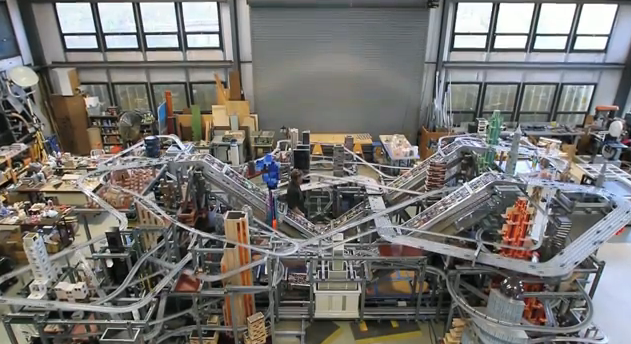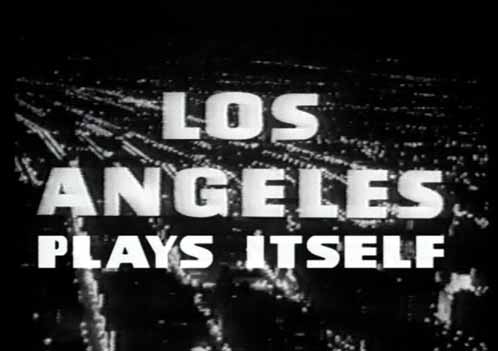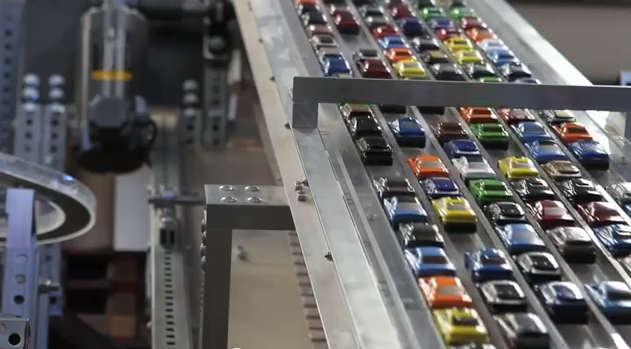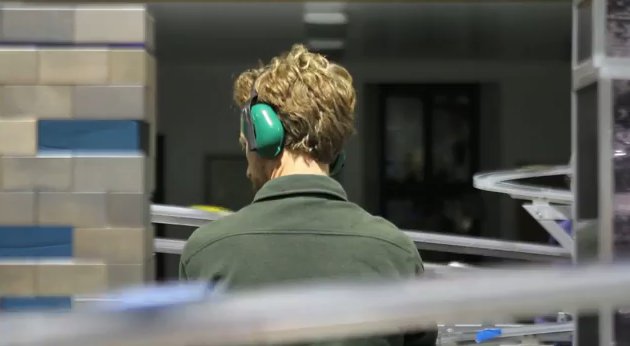
Image credit: Screenshot, "Metropolis II" on YouTube
Los Angeles, the city we all (excluding Randy Newman) love to hate, is the inspiration for Chris Burden’s new kinetic sculpture, "Metropolis II," using 1,080 toy cars, many steep ramps, and a few powerful motors. The sculpture is expected to debut at the Los Angeles County Museum of Art (LACMA) this fall. Despite the sculpture’s not-yet-finished state, it’s already causing quite a buzz in the blogosphere, with coverage in the New York Times’ Wheels blog, LACMA’s Unframed blog, and GOOD Magazine’s Culture blog.
As a former Angeleno, the city and the ways that it’s depicted in art, film, and literary productions fascinate me. This fascination is well-documented by filmmaker Thom Andersen in his three-part video essay released in 2003, Los Angeles Play Itself.

Image credit: Bright Lights Film Journal
In Andersen’s movie, scenes from hundreds of movies traipse across the screen while a narrator laments the fact that Los Angeles has been maligned by the movies that are filmed and set in the city. According to Andersen, the city has been blown up and knocked down in film, if not completely evacuated of all the things that make it great—its pockets of diversity, its scruffy beauty, its simultaneously chaotic and laid-back lifestyle. By the end of Andersen’s epic on Los Angeles, we wholeheartedly agree with his musings about “Who knows the city?” For Andersen, and for fans of Los Angeles Plays Itself, the answer to this question is “Only those who walk, only those who ride the bus. Forget the mystical blatherings of Joan Didion and company about the automobile and the freeways. They say, nobody walks; they mean no rich white people like us walk. They claimed nobody takes the bus, until one day we all discovered that Los Angeles has the most crowded buses in the United States.” Being on the ground, in the streets, is what matters.
Chris Burden brings us the streets of a future Los Angeles with his “Metropolis II” kinetic sculpture. Burden’s metropolis has no discernable landmarks, no “A-ha! That’s Los Angeles!” buildings.

Image credit: Screenshot, "Metropolis II" on YouTube
But, there are a lot of freeways—in lanes sometimes 10 or more across, multicolored cars fly past. In a movie about the second Metropolis installation posted on the Gagosian Gallery’s YouTube page, Burden explains his reasoning for why he decided to make an installation where the toy cars never have to stop. As images of cars dart across the screen, Burden jokes that “I love hearing that the cars are going 230 miles an hour. That makes me really hopeful for the future. That’s about the speed they should be running. Not 23.4 miles an hour, which is what my BMW says I average driving around LA. It’s about to be over. The idea that a car runs free—those days are about to close. So, it’s a little bit like making a model of New York City at the turn of the last century and your model had horse buggies everywhere while automobiles are about to arrive. So, something else is about to arrive.” Burden’s “something else” are cars that don’t need people to guide them through the city, since there are no people that could get in the way of the self-sufficient cars.
The most striking feature for me while watching the movie about this installation is that there are no future people in this installation, no future pedestrians who can truly “know the city.” In “Metropolis II,” what we get is a people-less, car-overrun metropolis. The one image that stands out most for me is one of Burden (I presume) standing amidst the installation as it’s running, wearing headphones to dampen the incessant noise.

Image credit: Screenshot, "Metropolis II" on YouTube
I’m not exactly sure what to make of this image, but it seems to me to represent a conflict of interests with the Andersen/pedestrian camp and the Burden/car camp. This image has gotten me thinking about how Los Angeles is often depicted as a car-centric, post-modern configuration of sprawling neighborhoods. Isn’t it time that the city breaks out of this constricting stereotype?
Isn’t Thom Andersen trying to change our preconceived notions of Los Angeles with his movie? Isn’t that what the city’s recent strides to improve public transportation in the spread out metropolis is all about? Filmmaker Roman Polanski once famously said that “Los Angeles is the most beautiful city in the world...provided it’s seen by night and from a distance”; it seems that, with Burden, Los Angeles is the most beautiful city in the world…provided it’s devoid of people to impede the city’s cars from going as fast as they can. The important question to ask is: Does Burden’s image of Los Angeles do anything to change our minds about the city people love to hate?




Recent comments
2 years 29 weeks ago
2 years 44 weeks ago
2 years 44 weeks ago
2 years 50 weeks ago
3 years 4 weeks ago
3 years 4 weeks ago
3 years 4 weeks ago
3 years 6 weeks ago
3 years 6 weeks ago
3 years 6 weeks ago